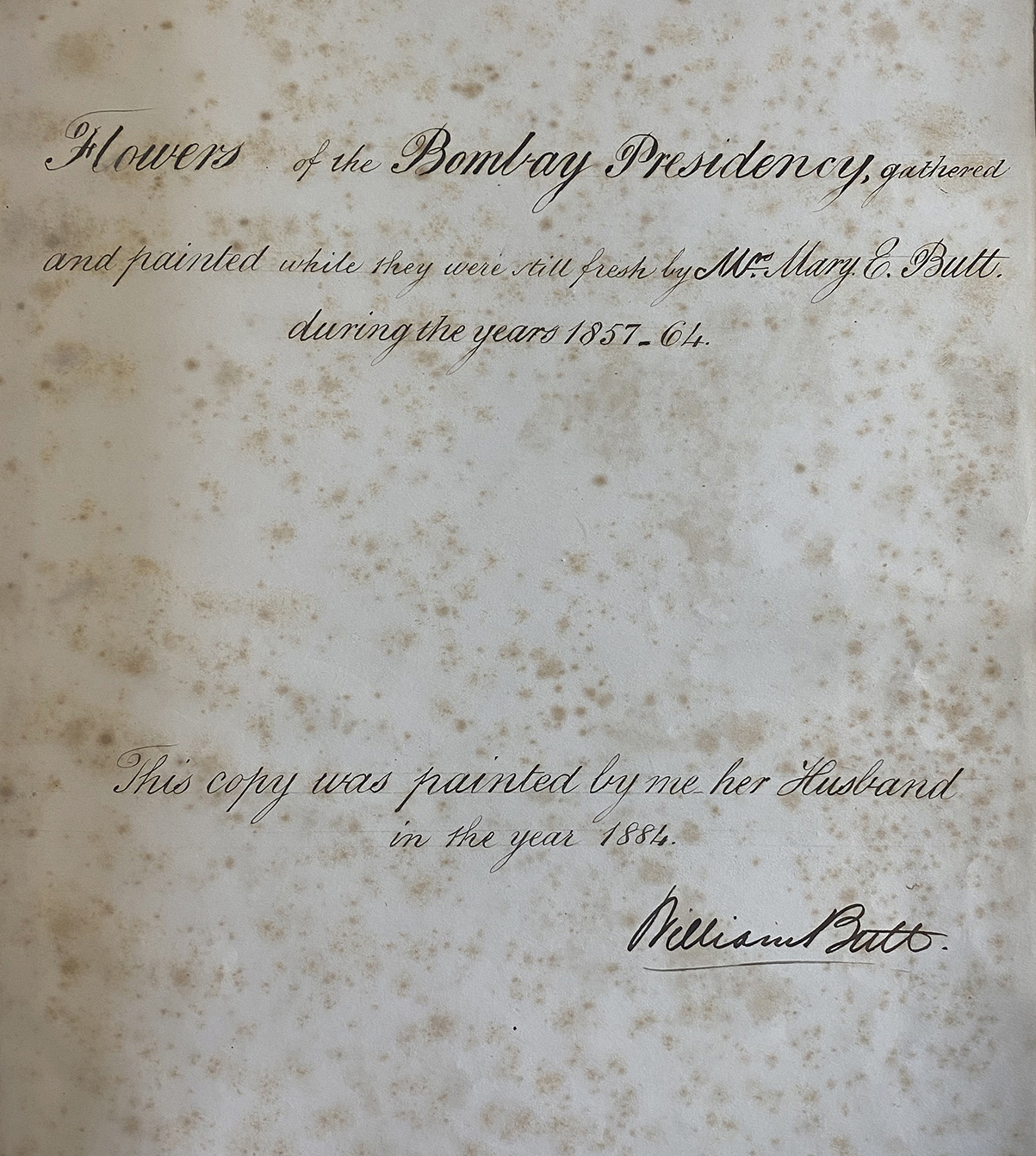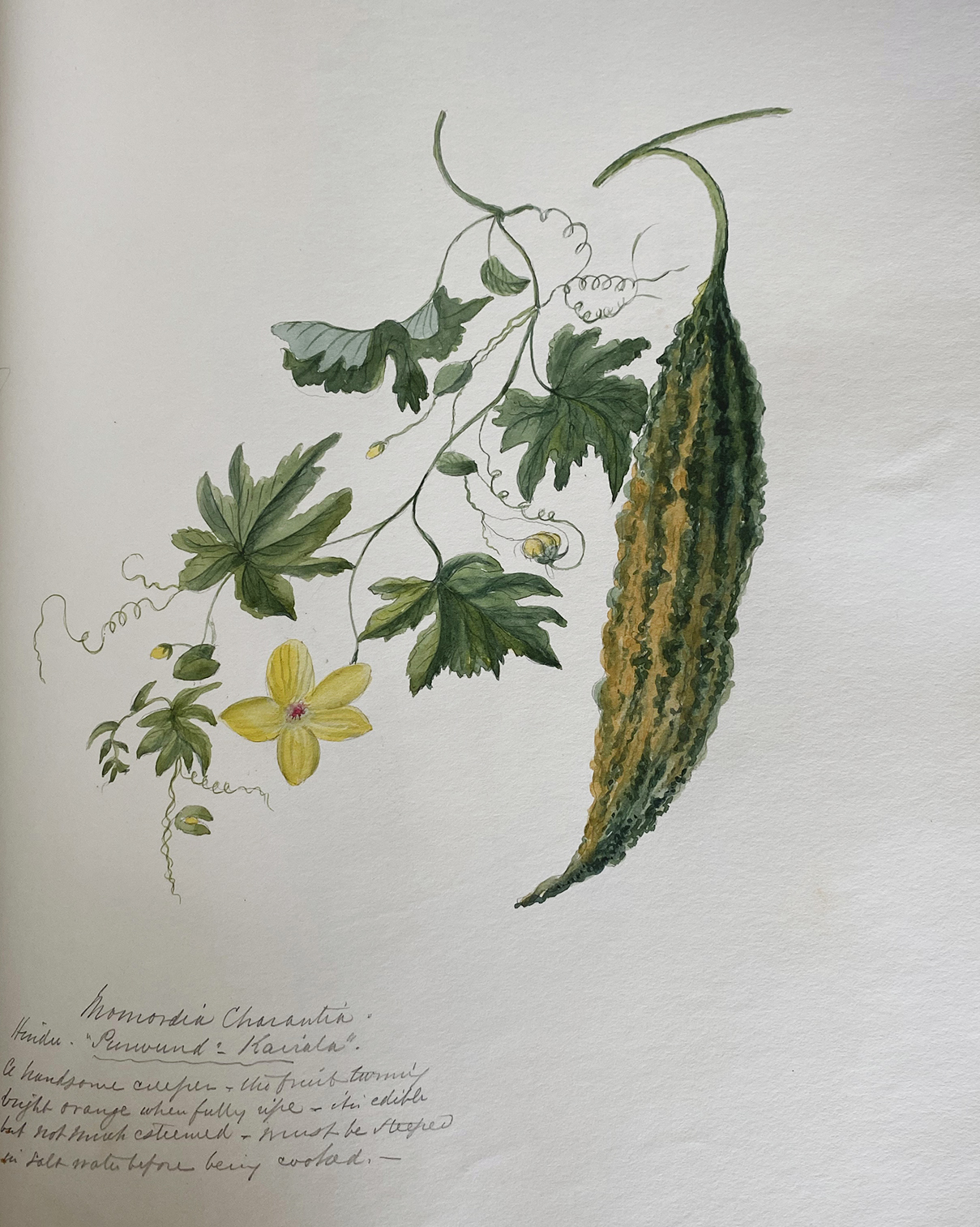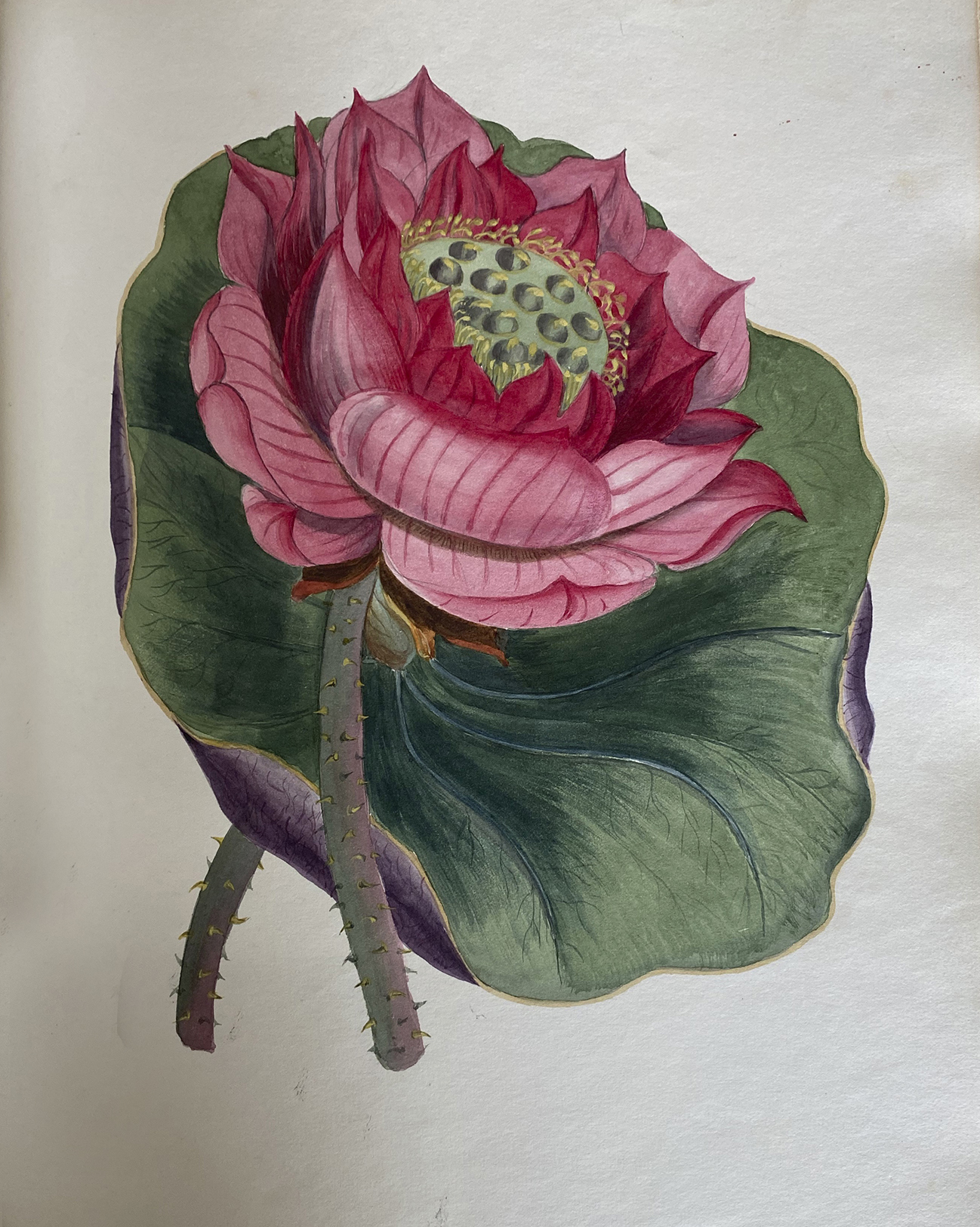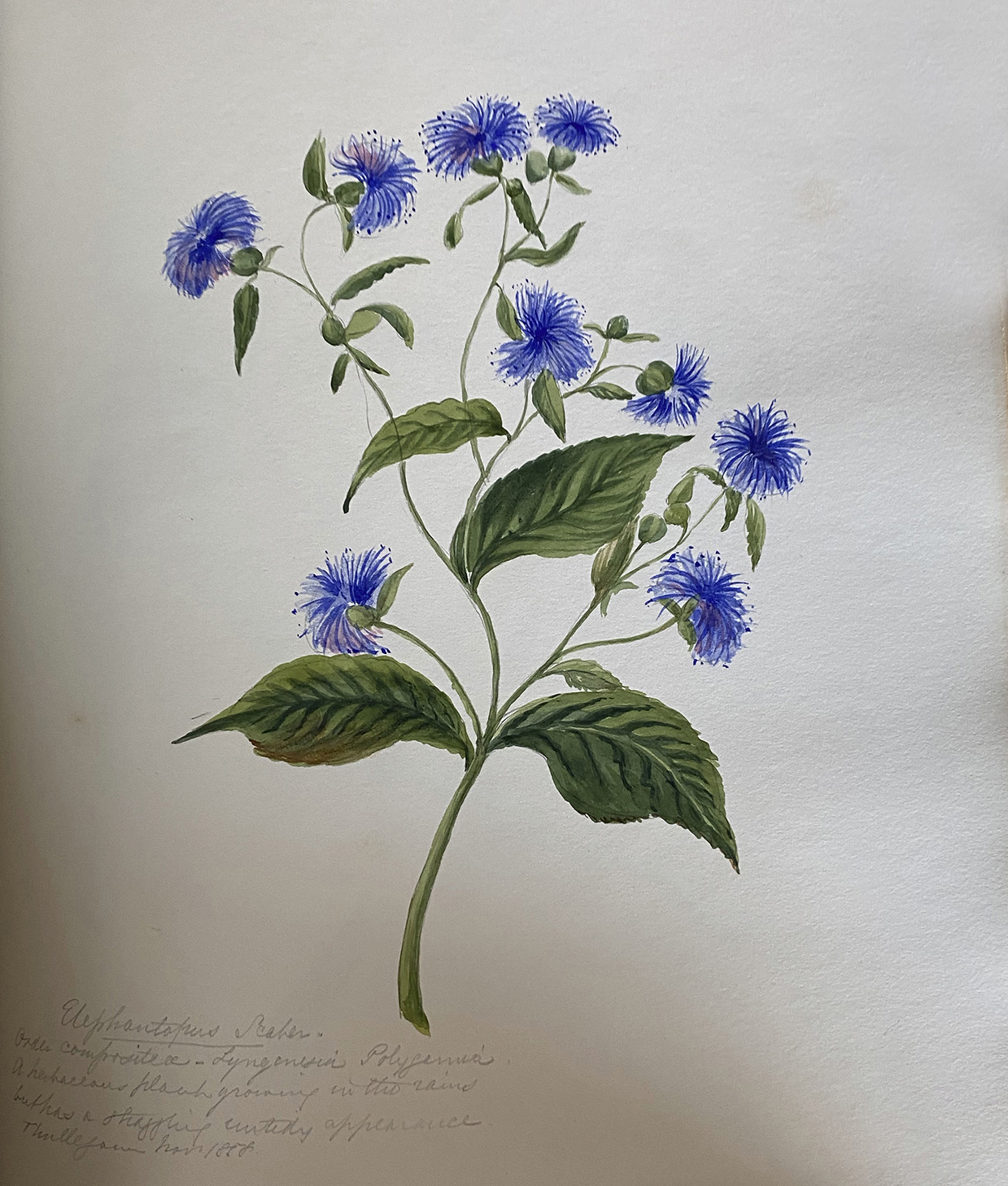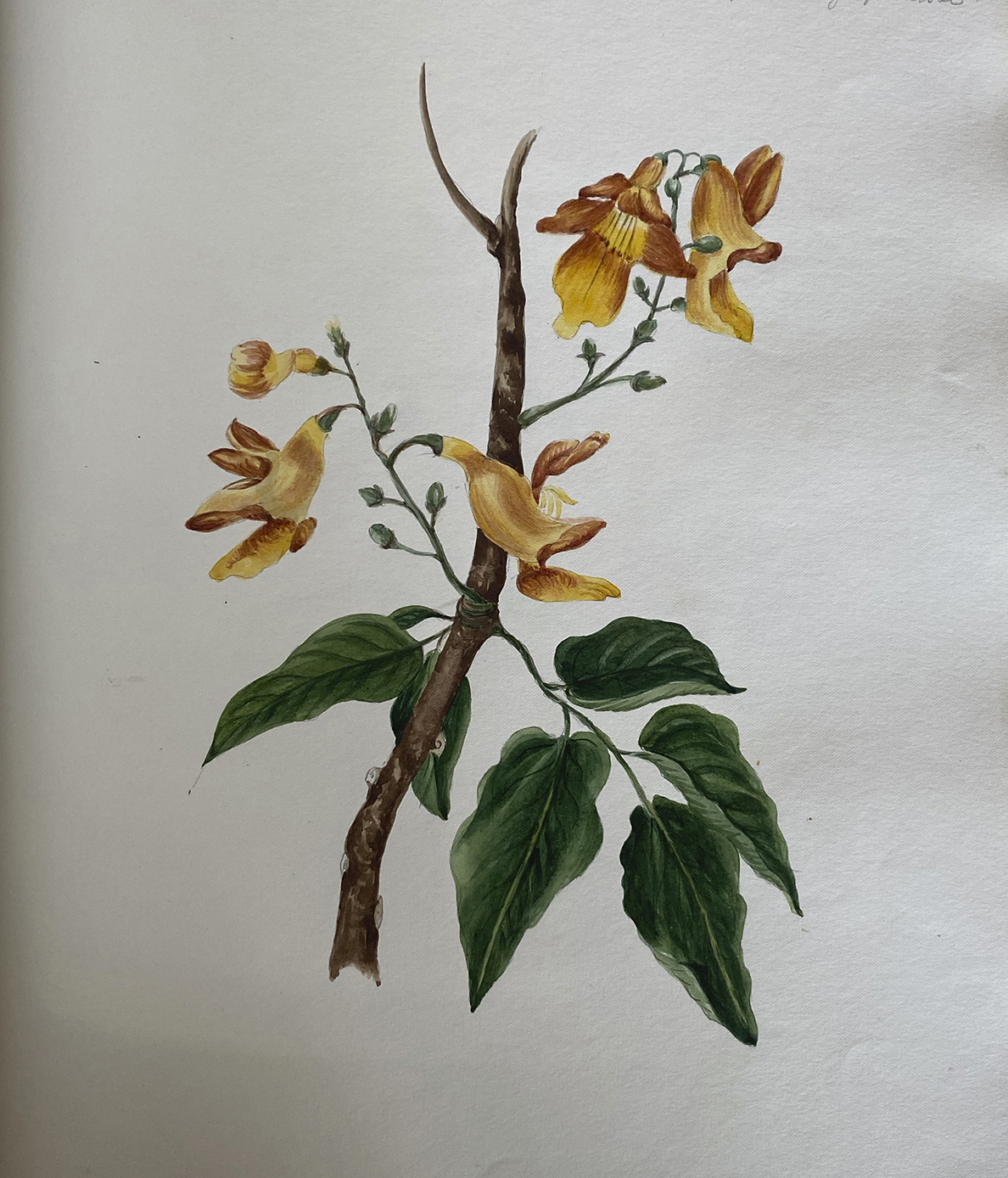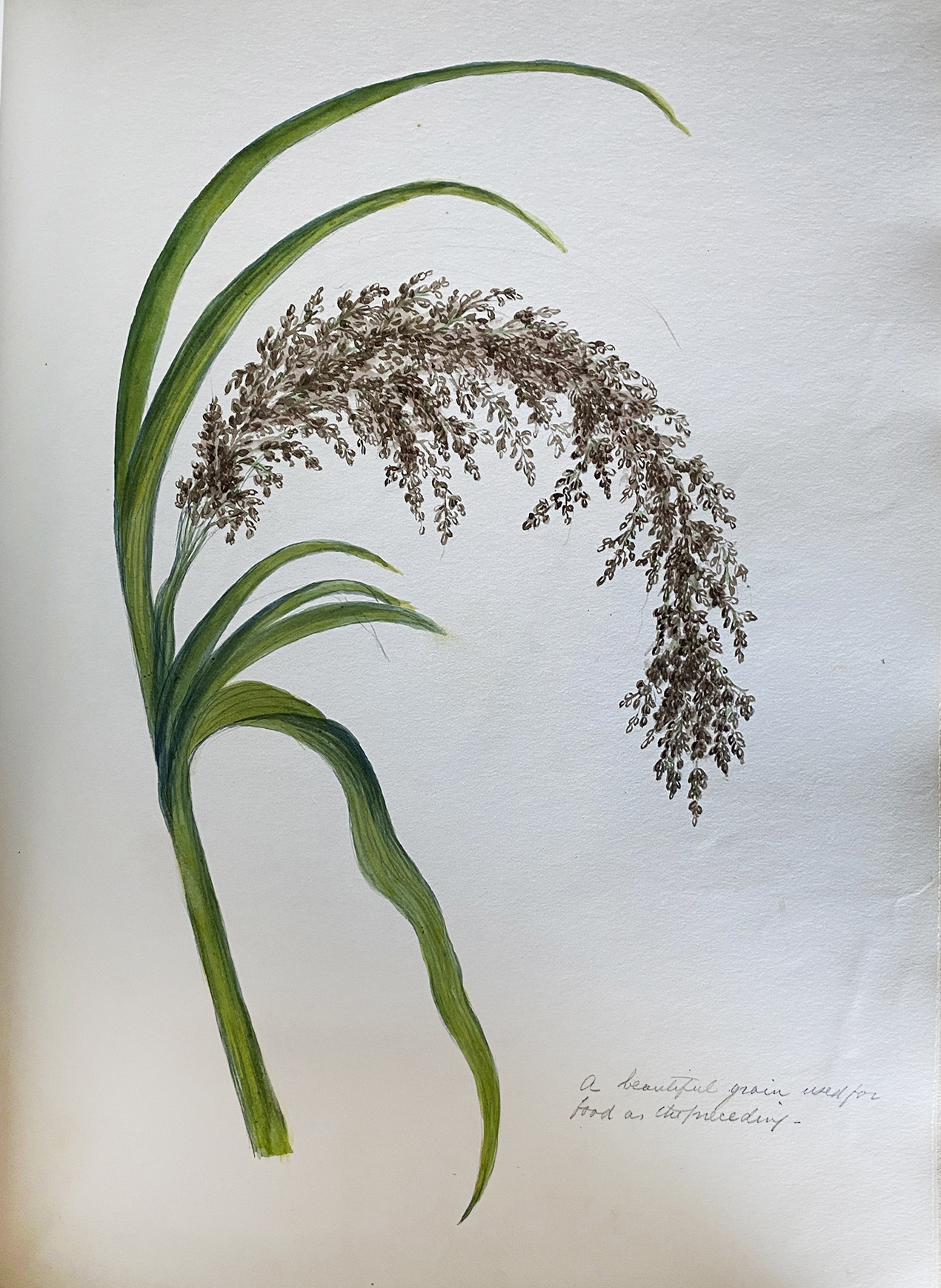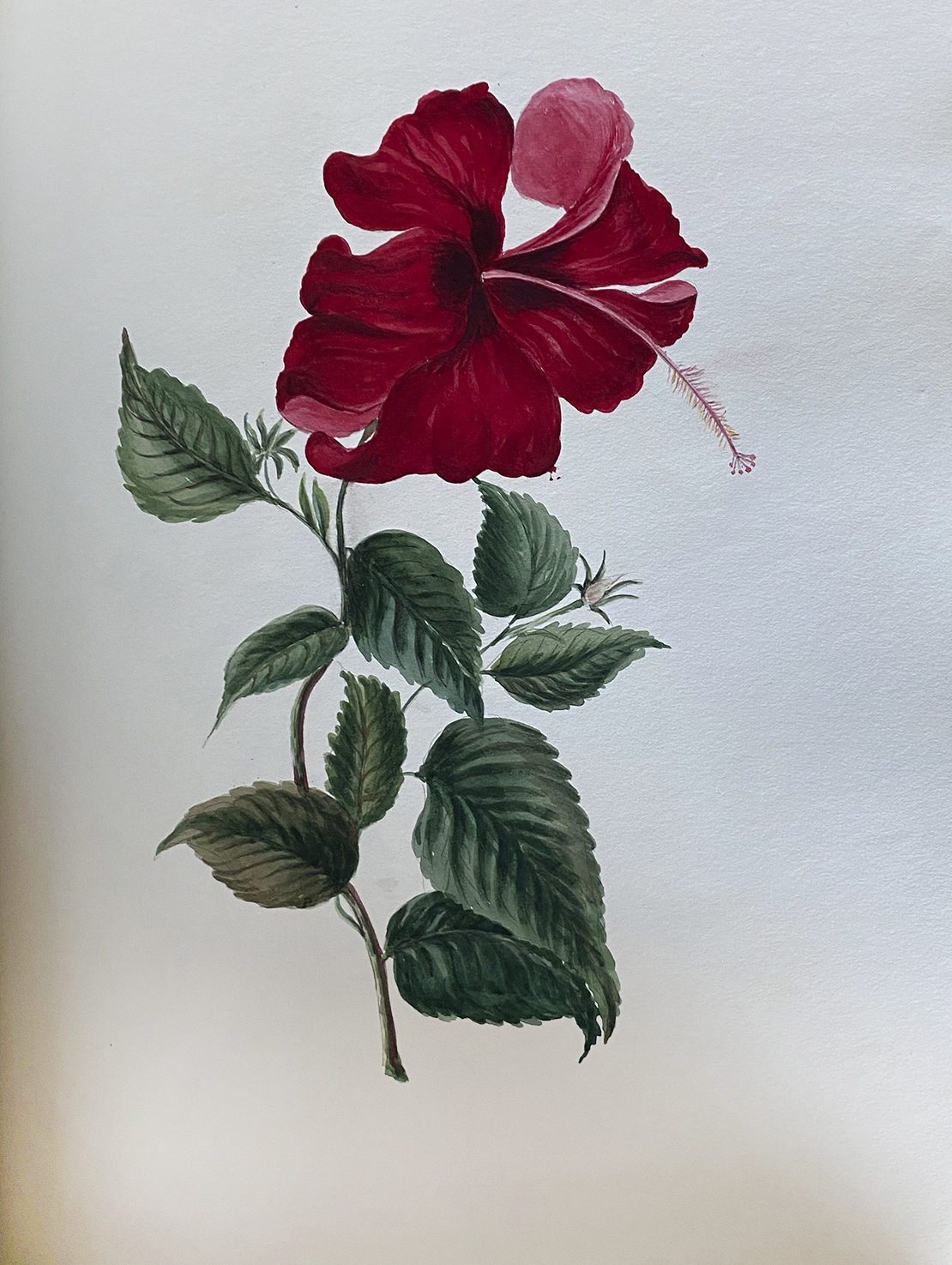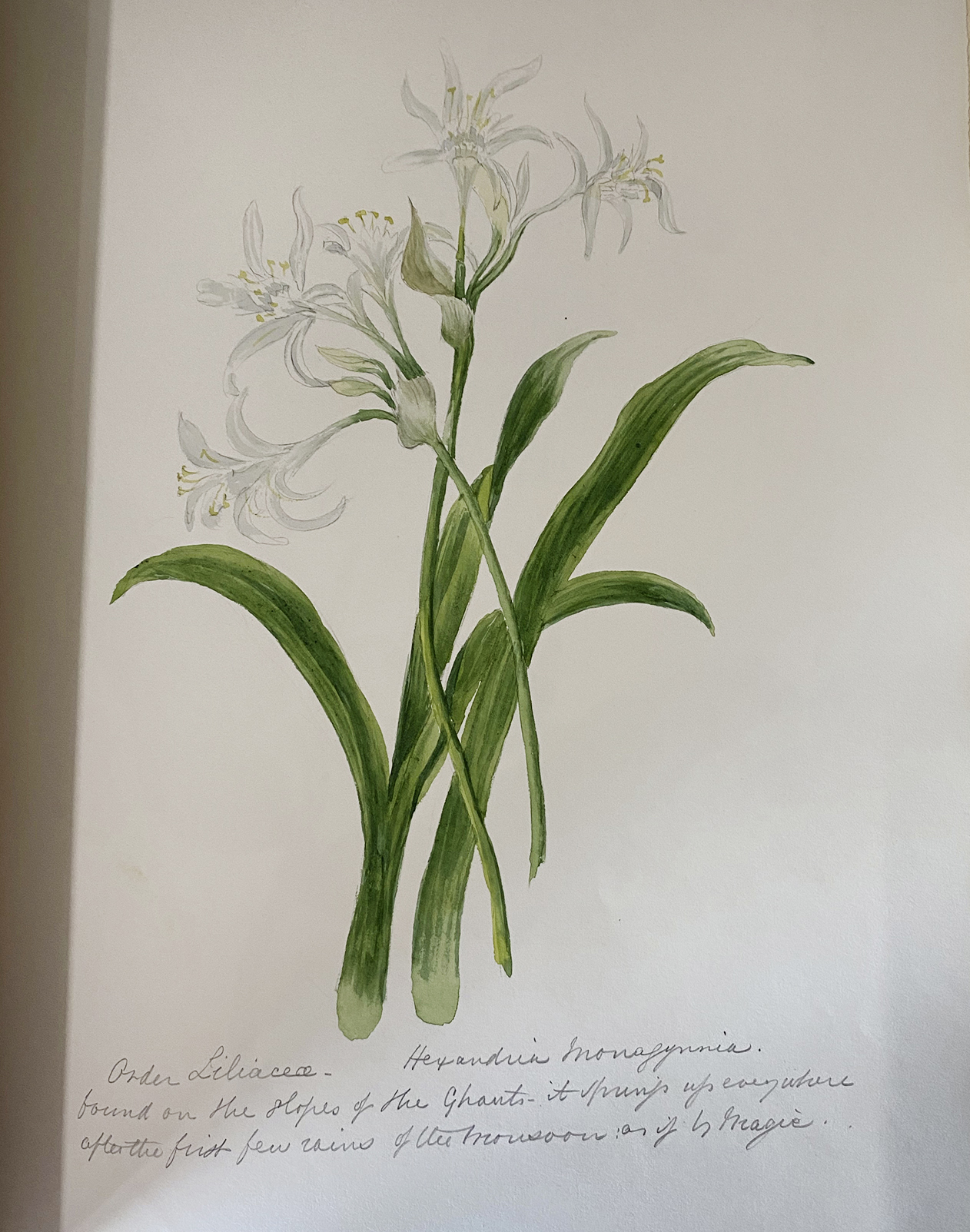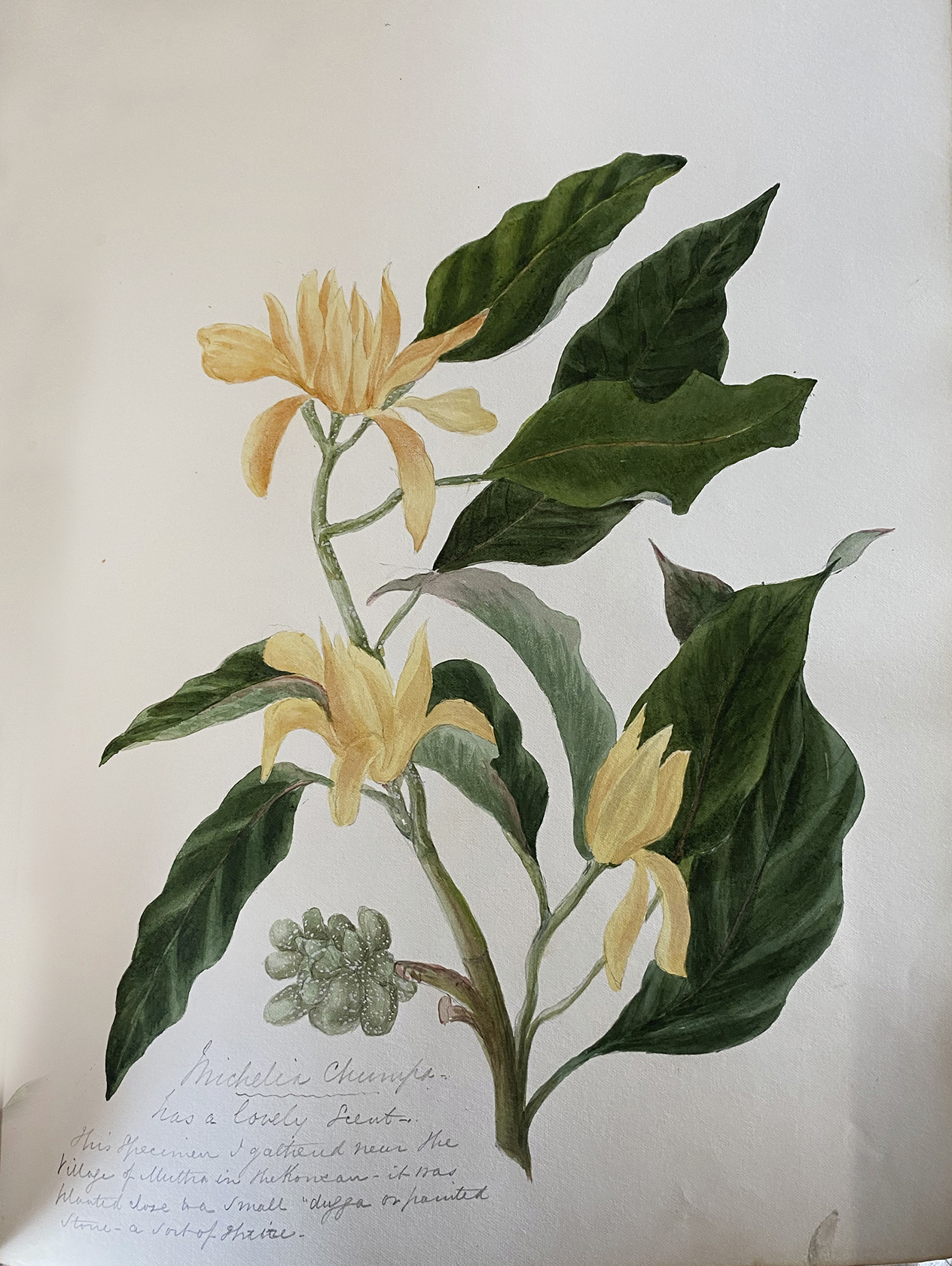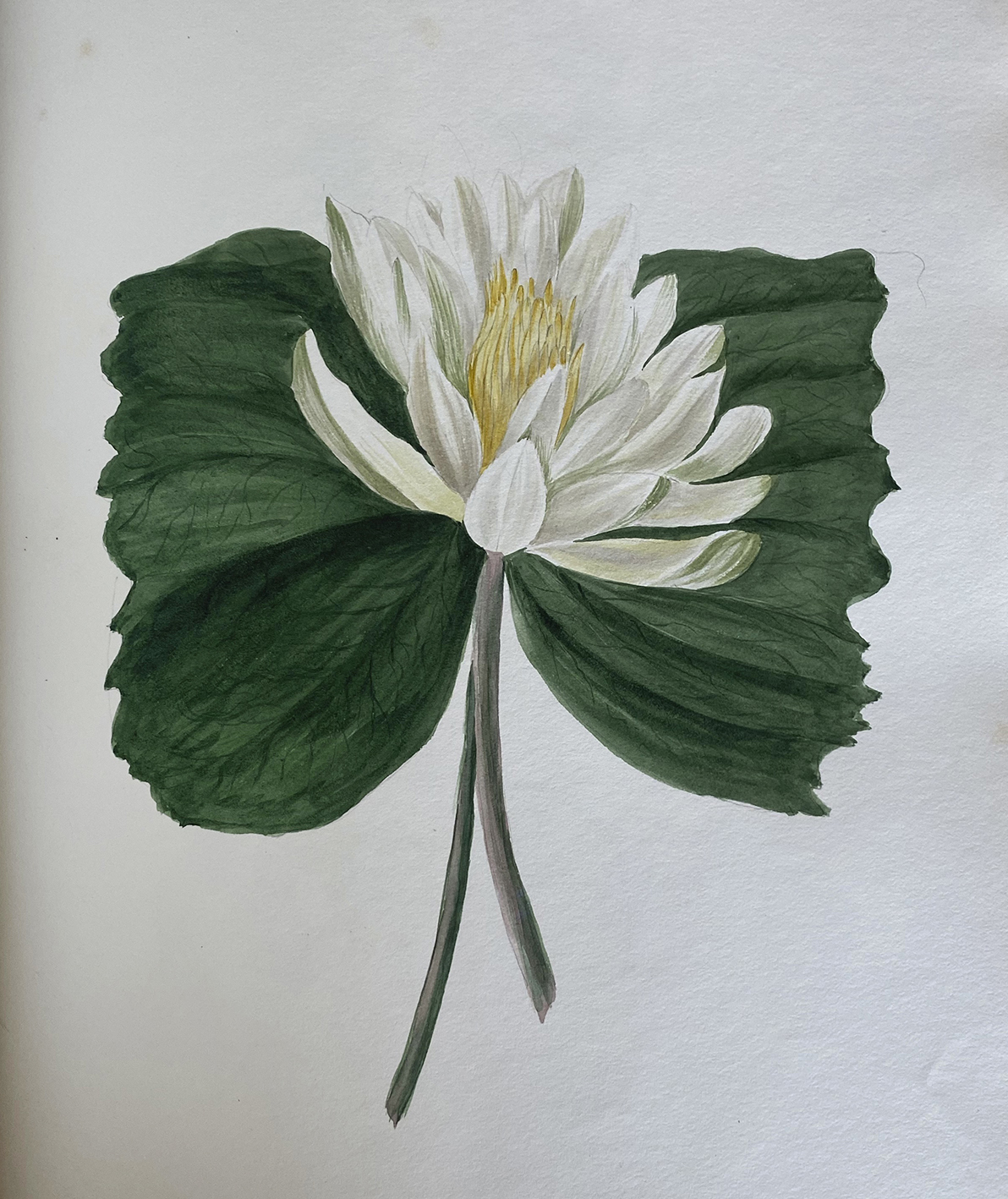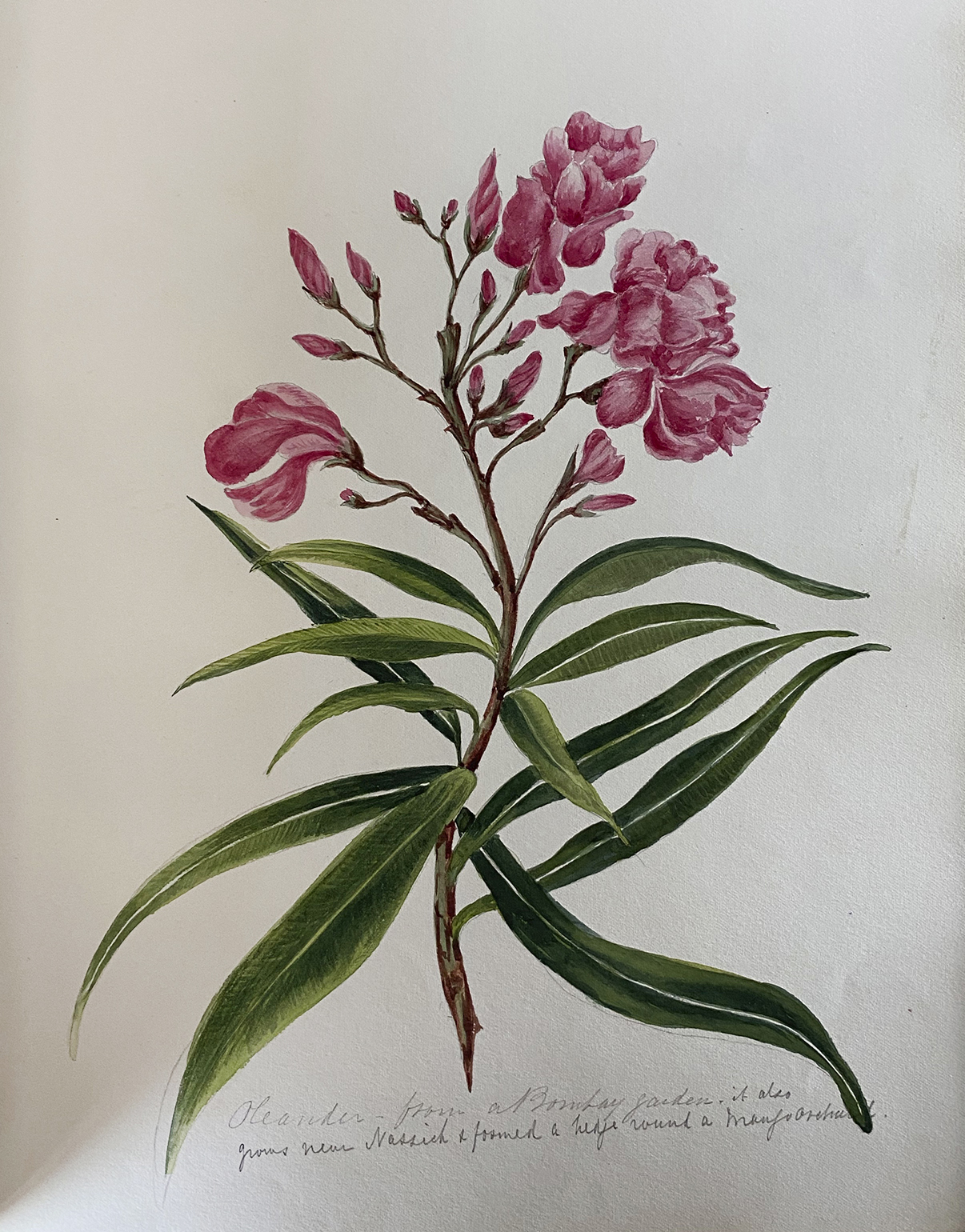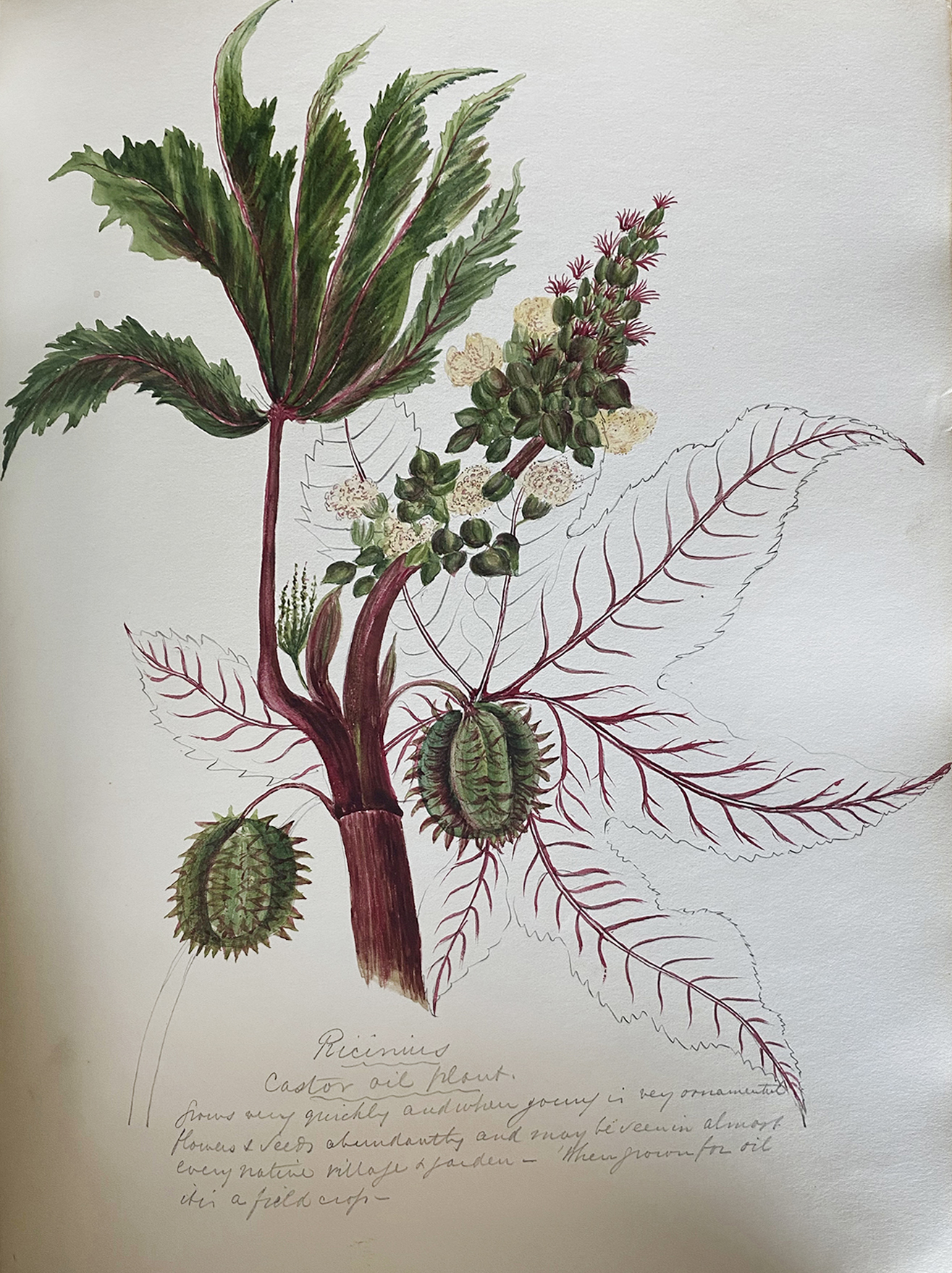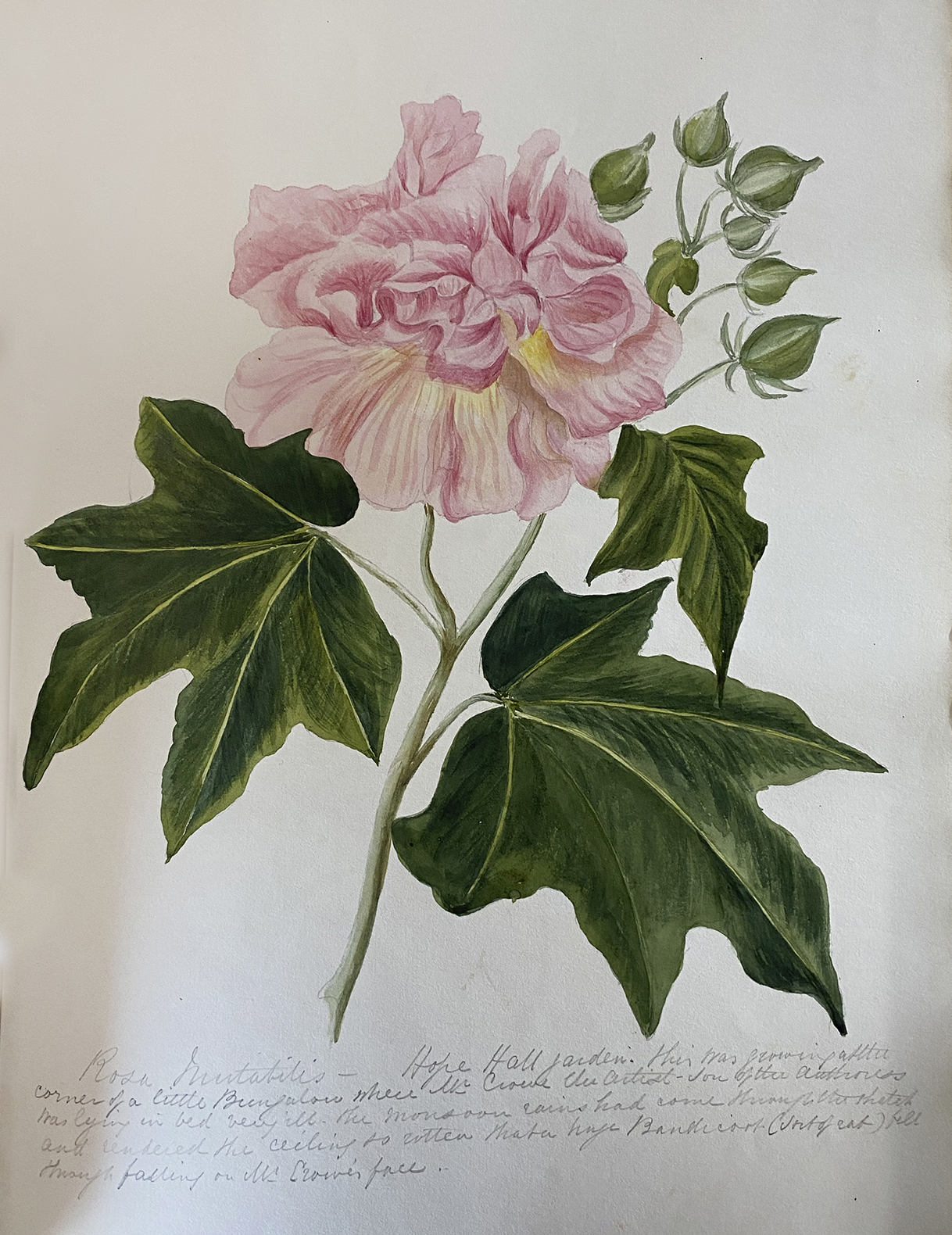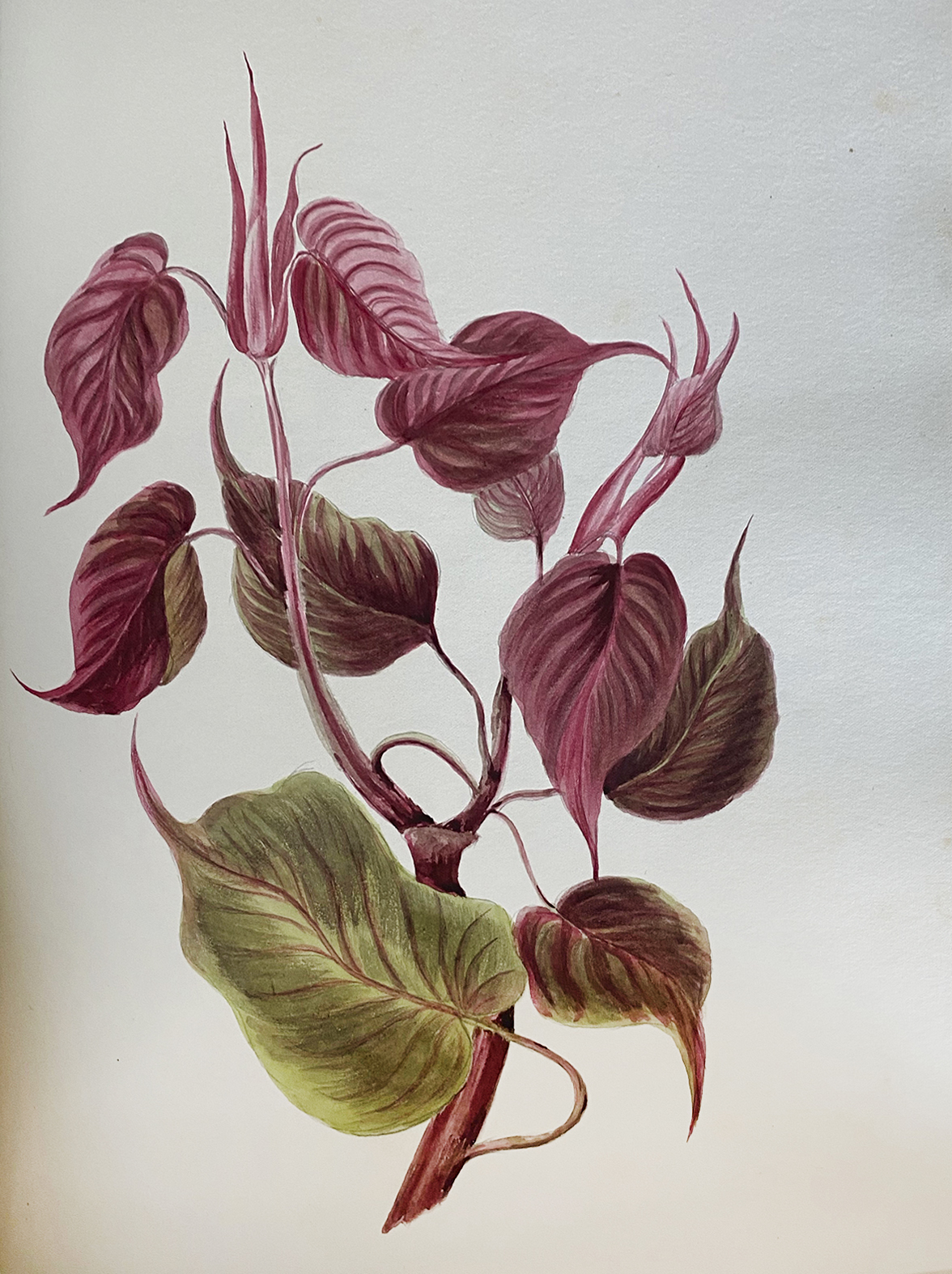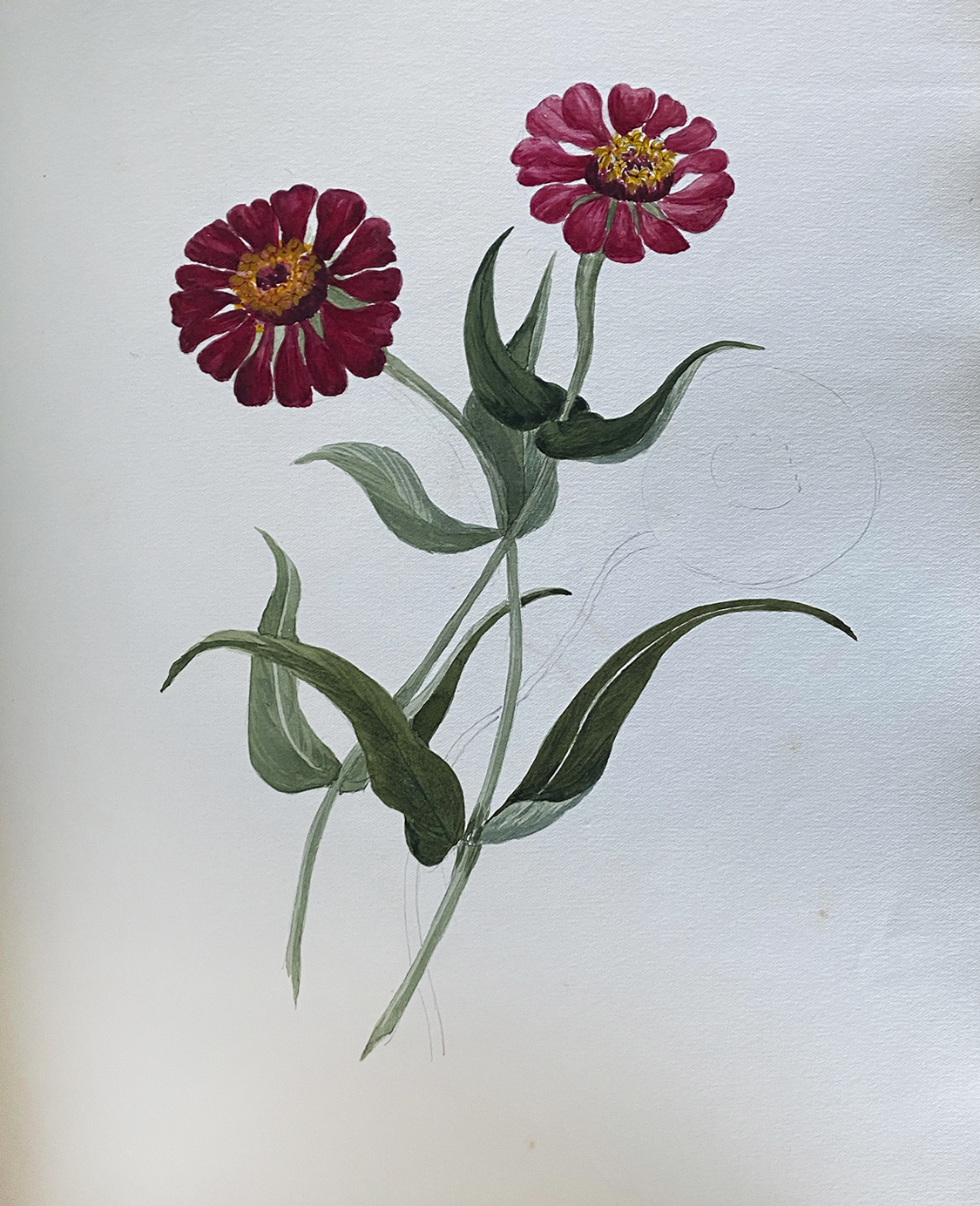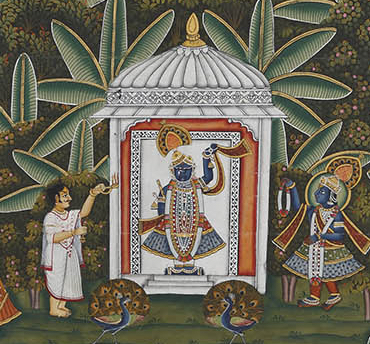Between the years of 1857 and 1864, the talented Mary Elizabeth Butt spent her time sketching illustrations of freshly plucked flowers during her stay in what was then called the Bombay Presidency. But it wasn’t until 1884 that William Butt, as a tribute to his wife, completed her artistic creations by masterfully bringing them to life with watercolour brushstrokes. The result? An exquisite collection of botanicals of truly breathtaking beauty, now in the Sarmaya rare books collection.
Flowers of the Bombay Presidency offers compelling insights into the botanical wonders found in the western parts of India in the 1880s, with 202 drawings of Indian flowers and plants in contemporary watercolour painting. Almost all the paintings are accompanied by a handwritten inscription in pencil with the name of the flower (often in Latin with the corresponding 'native name'), its characteristics, the garden or location from which it had been taken, as well as any medical or nutritional uses and a dash of anecdotal info.
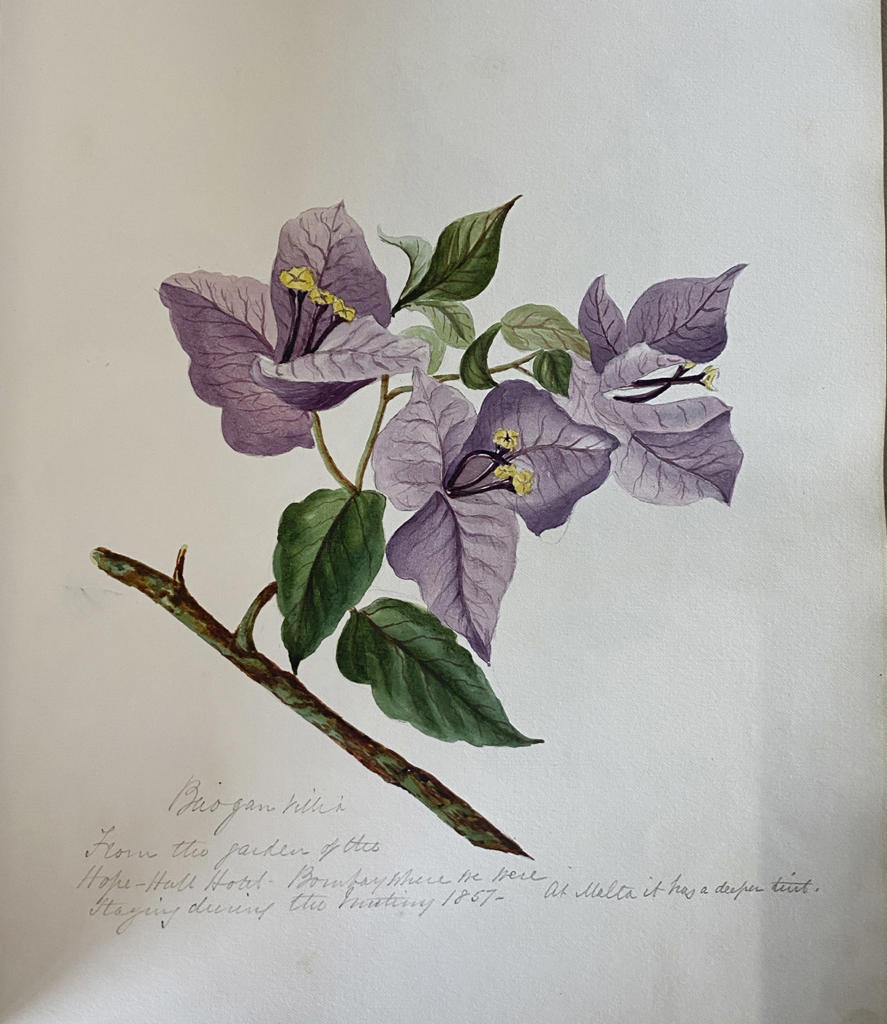
Take, for example, this lovely botanical of a bougainvillea. The lavender flowers are not only breathtaking in their details, but also carry this text underneath: From the garden of the Hope-Hall Hotel, where we were staying during the Mutiny 1857 - At Malta, it has a deeper tint. Another striking image is that of the mouthwatering jamun (black plum or ‘jambool’ in Marathi), a fruit which Mary notes has a peculiar, rough flavor and in the absence of anything better makes a decent pie. We’ll have a slice.
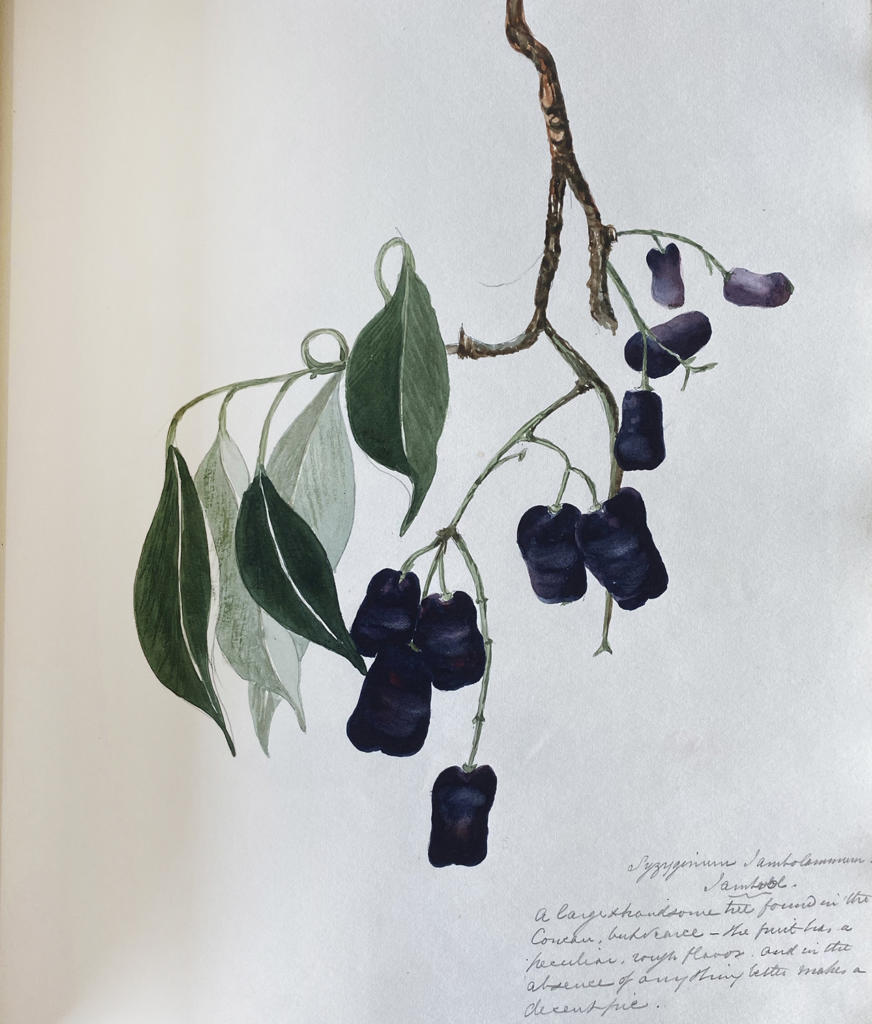
There are other attractive ornamental flowers, rendered with chromatic perfection, like the lotus, rose, marigold and jasmine. Different varieties of cactus, some cereals and edible plants like mango, tomato and bitter gourd have also been depicted by the Butts in this detailed folio. Along with the Hope Hall Garden in Matheran, the other regions mentioned in this book are Malabar Hill, Nashik, Mahabaleshwar and Deccan Highland (all in present-day Maharashtra).
Not only do these vivid paintings faithfully depict the botanical life of the time, they are also of great importance scientifically, and have helped researchers understand and study the flowers that were used for medicinal purposes in the 19th century, both for Western and Ayurvedic medicine.
The personal handwritten inscriptions with each beautiful painting are what truly makes this a book of special significance. They are like clues left behind for us to decipher and pursue, a delightful map full of whimsy with which to imagine a time long gone by.

